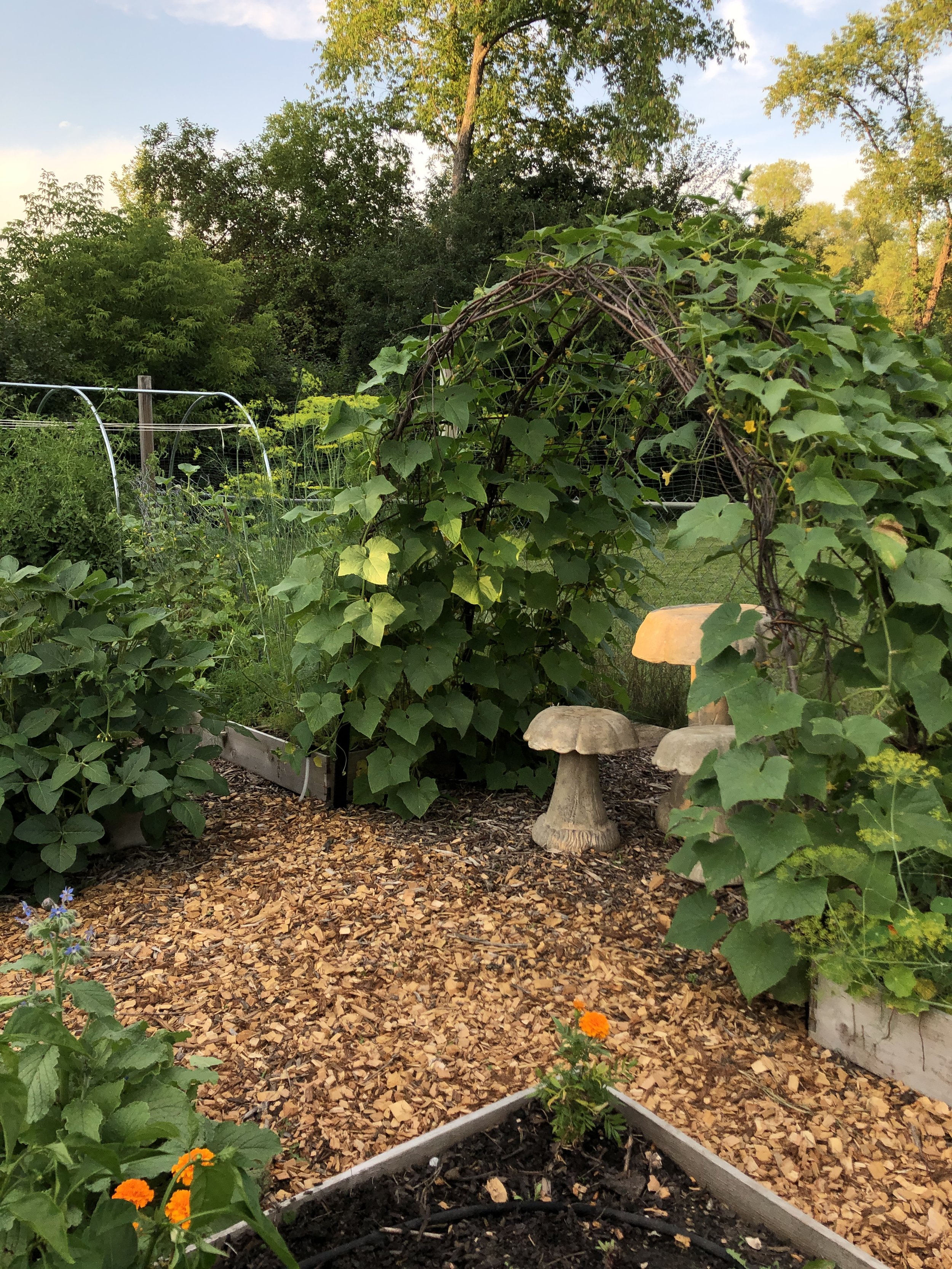July is the magical time of year when berries are ripe, squash are blooming, and apples are forming. Maybe you’re busy picking those berries and maintaining your garden, or perhaps you haven’t planted a garden at all and figured it was too late. Either way, don’t miss out on the opportunity to plant a variety of vegetables for a fall harvest. Now is the time!
Getting your fall garden started is fairly straightforward, but there are a few things to consider when planning and planting. Keeping each of these things in mind will ensure that you have a successful harvest to enjoy this fall!
Cool weather crops like lettuce and arugula are ideal for fall growing. Here, we’ve created a bunny-proof cloche so that our client can grow these greens right in her front yard.
Choose the right crops
First up, what would you like to grow? The popular crops that can be started from seed this time of year include all kinds of lettuces and greens, radishes, peas, bok choy, carrots, beets, and kohlrabi. Check out our guide, Planting for a Fall Harvest, for a handy chart with more details on the options. Included in this chart is information for crops that can be started as transplants this time of year as well (vs sowing the seed directly into your garden); just be aware that this means you would need to have already started your own seedlings or be able to find some at a nursery.
As you peruse your options, read the seed packets to get a sense of how much space the crop will take up. Keep your available space in mind as you go on your seed shopping spree!
Prepare the space
Speaking of available space - you’re going to need some! This may mean clearing out old crops that are still limping along - like peas that are barely producing or greens that are starting to bolt. Pull out those plants, along with any weeds, to create a fresh slate for your new plants to grow. This is also a good time to add an inch of compost or some all purpose organic fertilizer to replenish the soil’s nutrients. Work these amendments in to the top couple inches of soil. If you have taken care not to walk on your garden beds (which compacts the soil), then there should be no need to till. The more you can avoid deep tilling of your garden, the better, as this disrupts the soil’s ecosystem.
Time it right
When choosing what to plant, consider how long the plant will take to reach a harvestable size. To do this, you need two pieces of information. First, you’ll need to know the average first frost date for your area. The Old Farmer’s Almanac’s website is a great resource for average frost dates, so you can check there if you’re unsure. Next, check the seed packet of the plant you’d like to grow for the “days to maturity” or “days to harvest.” The packet will say something like “Days to maturity/harvest: 25,” or it might just say “25 days.”
A note of explanation about “days to maturity/harvest” - For plants that are typically sown by seed directly into the garden (which includes all the plants we mentioned above), the “days to maturity” means the time from sowing the seed to harvest. For plants that are typically started indoors (you’ll know this because the seed packet will give instructions on doing so), the days to maturity refers to the time from transplanting the seedling into the garden to harvest. If that’s not confusing enough, many variables will affect the final outcome, so these numbers are by no means set in stone.
Finally, to determine the right time to plant, count back the days to maturity from your first frost date, and then add a couple weeks for good measure (growth slows dramatically as weather cools and days shorten). For example, if your first frost date is October 2, and you want to grow a lettuce that takes 45 days to mature, you would plant the first week of August (August 4 if you are following the formula exactly). To help give you ballpark timing on each type of crop, refer back to our guide, Planting for a Fall Harvest, or check out some of the crops we’ve highlighted below.
Still feeling unsure? Maybe you’d like to utilize our services to start your first garden off with a detailed plan - complete with layout, timetables, and how-tos. Click here to learn more about how we can help.
Arugula
Arugula is quick to grow and cold tolerant; a very reliable fall crop. Sow directly in the garden from mid-July to mid-August.
Beet
Your latest sown beets should be earlier maturing - fewer than 50 days to maturity. Sow directly in the garden any time up to early August.
Bok Choy
Most varieties should mature in plenty of time. Sow directly in the garden in mid-July.
Kale
Early sowing will allow plants to mature, late sowing will mean harvests of baby kale, so sow extra! Sow directly in the garden any time up to early August.
Radish
Both fast (20-30 days to maturity) and slow (50-60 days to maturity) can be planted for fall harvest. Sow slow varieties directly in the garden late July to early August and fast varieties August to September.
Pea
Choose powdery mildew resistant varieties, such as “Cascadia” and “Sugar Snap.” Sow directly in the garden in late July.



















